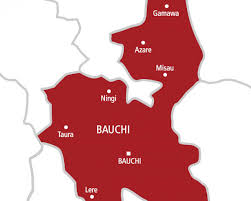One of the common lungs diseases is the Chronic Obstructive Pulmonary Disease (COPD). COPD is a common lungs disease causing restricted airflow and breathing problems. It is sometimes called emphysema or chronic bronchitis.
COPD is a life-threatening lungs disease that affects over 380 million adults worldwide with an estimated global economic cost of over $2 trillion. Outdoor air pollution continues to worsen, particularly in growing urban settings, contributing further to increased risk. Indoor smoke from the use of unclean cooking and heating fuels are major risks among women and children in many rural settings.
Low income, poor nutrition, childhood respiratory infections, tuberculosis, and HIV infection are additional COPD risks that have been reported in many African settings, including Nigeria. Facilities and strategies for prevention, early diagnosis, treatment and overall management of COPD have been relatively limited.
According to the World Health Organisation (WHO), the most common symptoms of COPD are difficulty breathing, chronic cough (sometimes with phlegm) and feeling tired.
COPD symptoms can get worse quickly. These are called flare-ups. These usually last for a few days and often require additional medicine. People with COPD also have a higher risk for other health problems. These include:
lungs infections, like the flu or pneumonia, lungs cancer, heart problems, weak muscles and brittle bones, depression and anxiety.
COPD is sometimes called emphysema or chronic bronchitis. Emphysema usually refers to destruction of the tiny air sacs at the end of the airways in the lungs. Chronic bronchitis refers to a chronic cough with the production of phlegm resulting from inflammation in the airways. COPD and asthma share common symptoms (cough, wheeze and difficulty breathing) and people may have both conditions.
Several processes can cause the airways to become narrow and lead to COPD. There may be destruction of parts of the lung, mucus blocking the airways, and inflammation and swelling of the airway lining.
COPD develops gradually over time, often resulting from a combination of risk factors: tobacco exposure from active smoking or passive exposure to second-hand smoke, occupational exposure to dusts, fumes or chemicals, indoor air pollution such as biomass fuel (wood, animal dung, crop residue) or coal is frequently used for cooking and heating in low- and middle-income countries with high levels of smoke exposure, early life events such as poor growth in utero, prematurity, and frequent or severe respiratory infections in childhood that prevent maximum lungs growth, asthma in childhood and a rare genetic condition called alpha-1 antitrypsin deficiency, which can cause COPD at a young age.
COPD should be suspected if a person has typical symptoms, and the diagnosis confirmed by a breathing test called spirometry, which measures how the lungs are working. In low- and middle-income countries, spirometry is often not available and so the diagnosis may be missed.
COPD isn’t curable, but it can get better by not smoking, avoiding air pollution and getting vaccines. It can be treated with medicines, oxygen and pulmonary rehabilitation. There are several treatments available for COPD. Inhaled medicines that open and reduce swelling in the airways are the main treatments. Bronchodilator inhalers are the most important medicines for treating COPD.
They relax the airways to keep them open. Short-acting bronchodilators start to work in seconds and can last for 4–6 hours. These are often used during flare-ups. Long-acting bronchodilators take longer to start working but last longer. These are taken daily and can be combined with inhaled steroids.
Other treatments may also be used: like steroid pills and antibiotics are often used to treat flare-ups, oxygen is used for people who have had COPD for a long time or have severe COPD, pulmonary rehabilitation teaches exercises to improve your breathing and ability to exercise and surgery may also improve symptoms for some people with severe COPD.
Fatima Dauda Salihu,
Department of Mass Communication, Bayero University, Kano.




